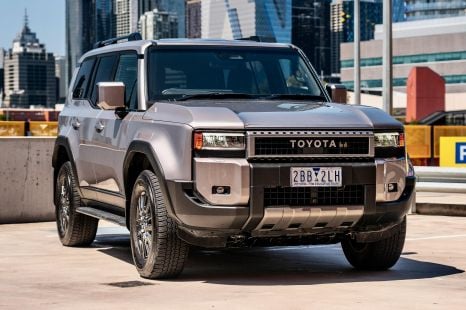

Max Davies
2025 Toyota Prado GXL review
2 Months Ago

Senior Contributor
Hyundai Australia has locked in the burly Palisade three-row SUV for launch during the fourth quarter of 2020 catering for people after something bigger than the Santa Fe and closer to a Mazda CX-9.
While designed for North America, where it competes with the Ford Explorer, Volkswagen Atlas, and Chevrolet Traverse among numerous others, the Palisade is actually produced in South Korea. Australia is the only right-hand drive market to take the vehicle at this stage.
This also gives Hyundai’s local arm a leg-up over Korean ‘frenemy’ Kia, which makes the rival Telluride in the USA for left-hand drive (LHD) markets only, ruling out an Australian launch.
We don’t have the full local story yet in terms of pricing and spec breakdowns. But we can bring you some information on what to expect, and a video next to a left-hand drive model brought to Australia for promotional and testing purposes.
The Palisade measures 4980mm long, which is 210mm up on the Santa Fe.
It’s also longer than the Toyota Kluger. It’s a bit shorter than the Mazda CX-9, which eclipses five metres in length, but the Hyundai is both taller and wider.
While not every car listed here is a direct rival per se, here’s some context about how the Palisade stacks up:
| Hyundai Palisade | Hyundai Santa Fe | Toyota Kluger | Mazda CX-9 | Toyota 200 LandCruiser | |
|---|---|---|---|---|---|
| L | 4981 | 4770 | 4890 | 5075 | 4990 |
| W | 1971 | 1890 | 1925 | 1969 | 1980 |
| H | 1750 | 1705 | 1730 | 1747 | 1945 |
| WB | 2900 | 2765 | 2790 | 2930 | 2850 |

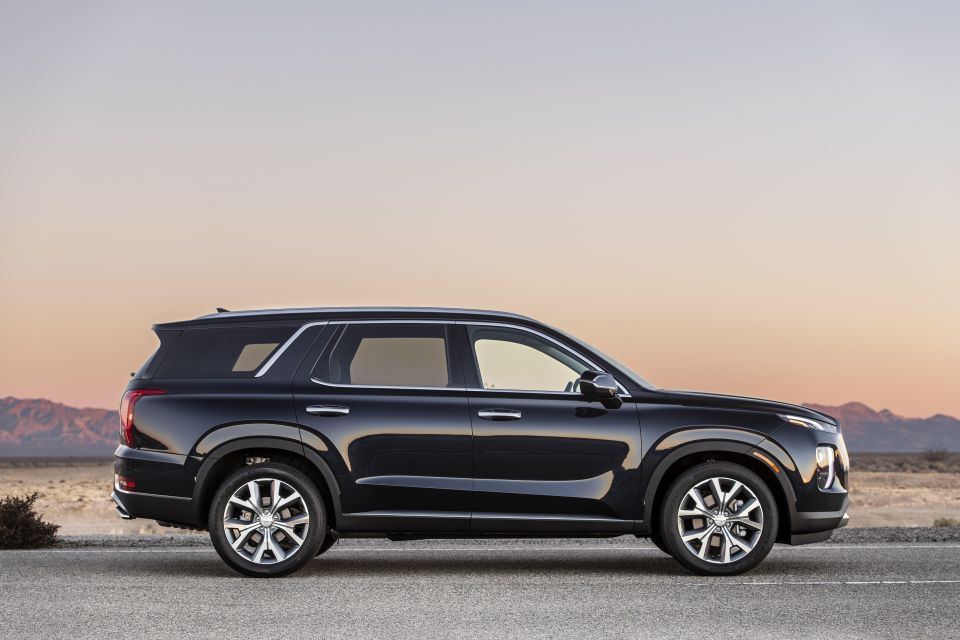
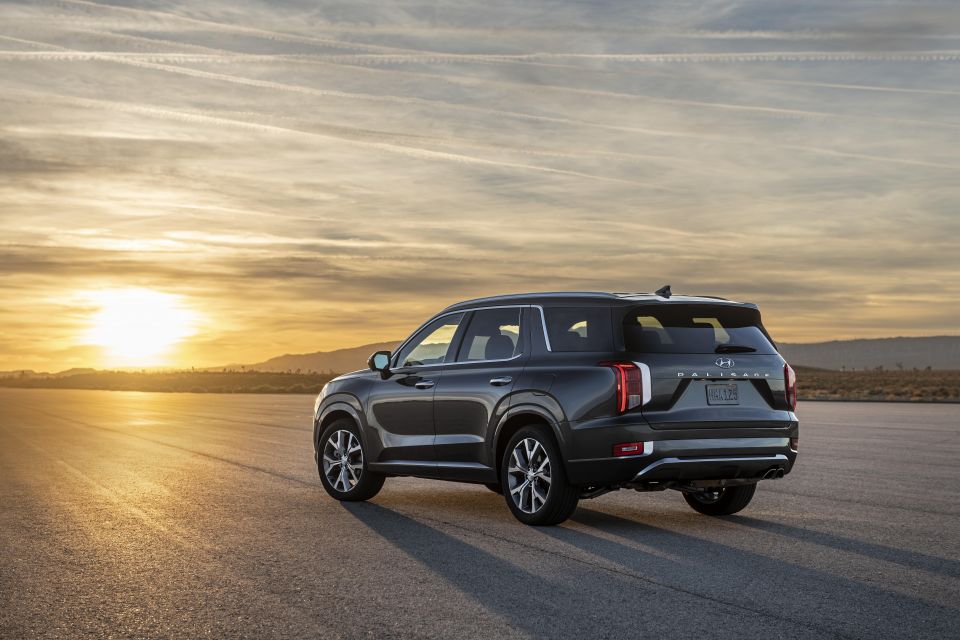
Petrol and diesel engines will be offered, which is rare for the segment. Most American-focused SUVs are petrol-only.
The petrol in question is a 3.8-litre V6 running the economy-minded Atkinson cycle, making 217kW of power and 355Nm of torque. It’s mated to an eight-speed automatic transmission.
In the USA both front- and all-wheel drive are offered, the latter with various traction modes and a locking differential to fix the torque split between your axles.
The V6 manages combined-cycle American EPA fuel economy of 10.7L/100km, and tows 2.3 tonnes.
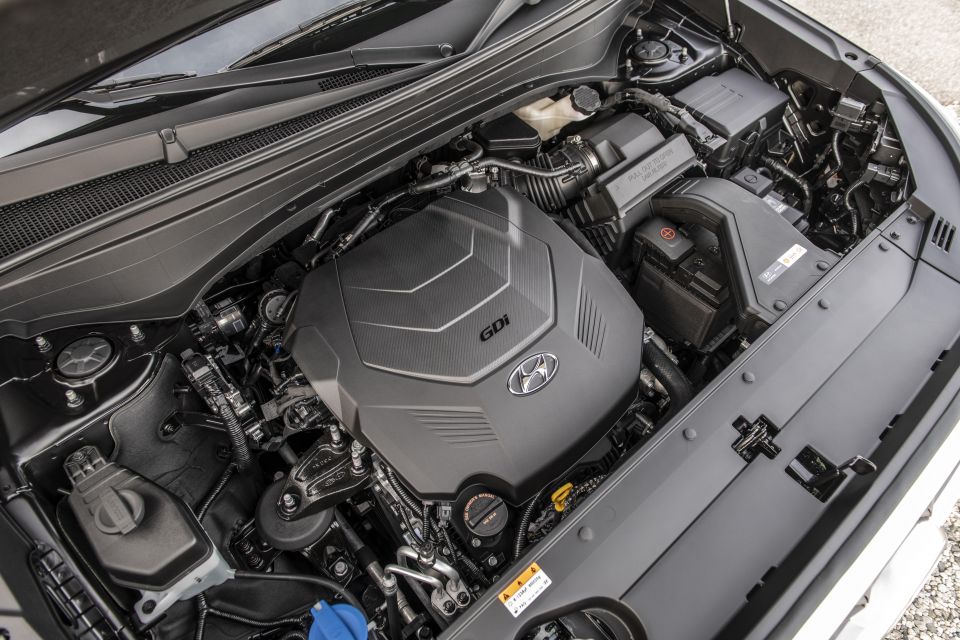

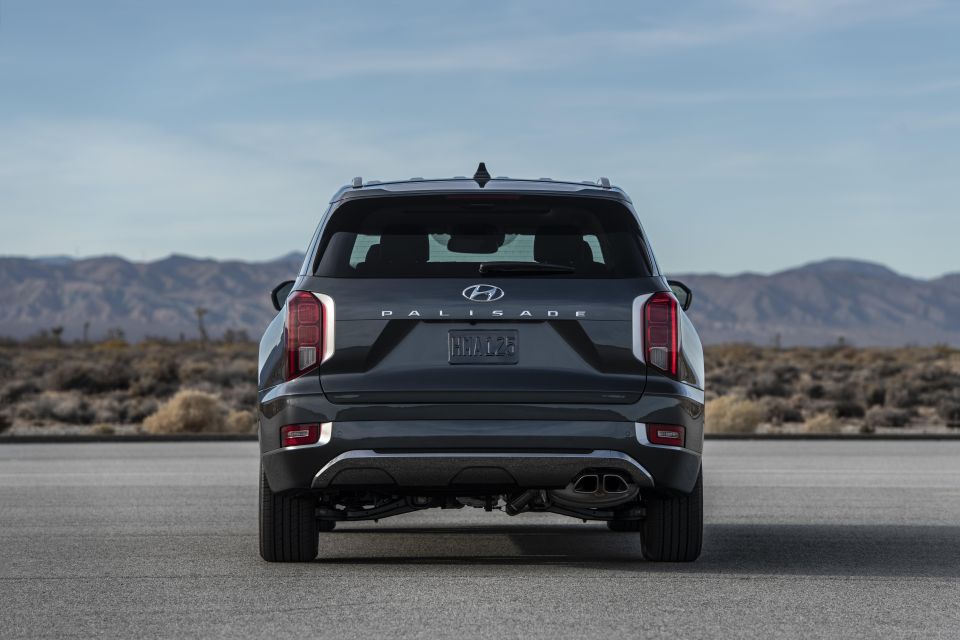
The other engine will be a 2.2-litre turbo-diesel familiar from the Santa Fe. In that application it makes 147kW/440Nm, uses an eight-speed automatic and all-wheel drive, tows 2 tonnes, and consumes a claimed 7.5L/100km.
We’re not yet sure if petrol will be offered in both front- and all-wheel drive locally, but you can bank on the diesel being AWD.
Like most crossovers, the Palisade is a monocoque design and has independent suspension at both ends. Hyundai Australia opted not to redesign the suspension locally as it does with most of its cars, having found the Eastern European market’s tune to be ideal for our roads after local testing.
We will withhold judgement until we have driven it.


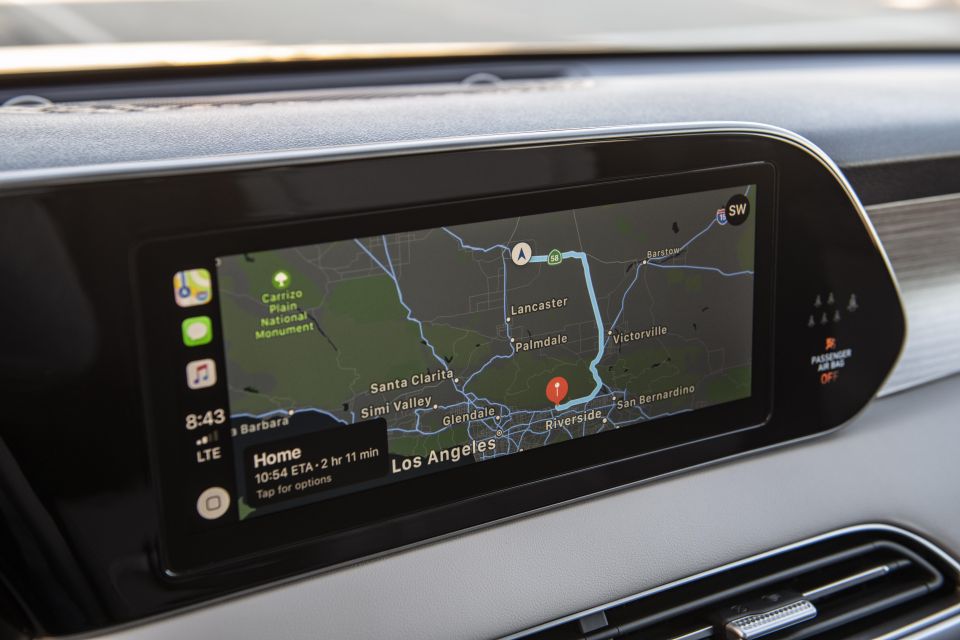
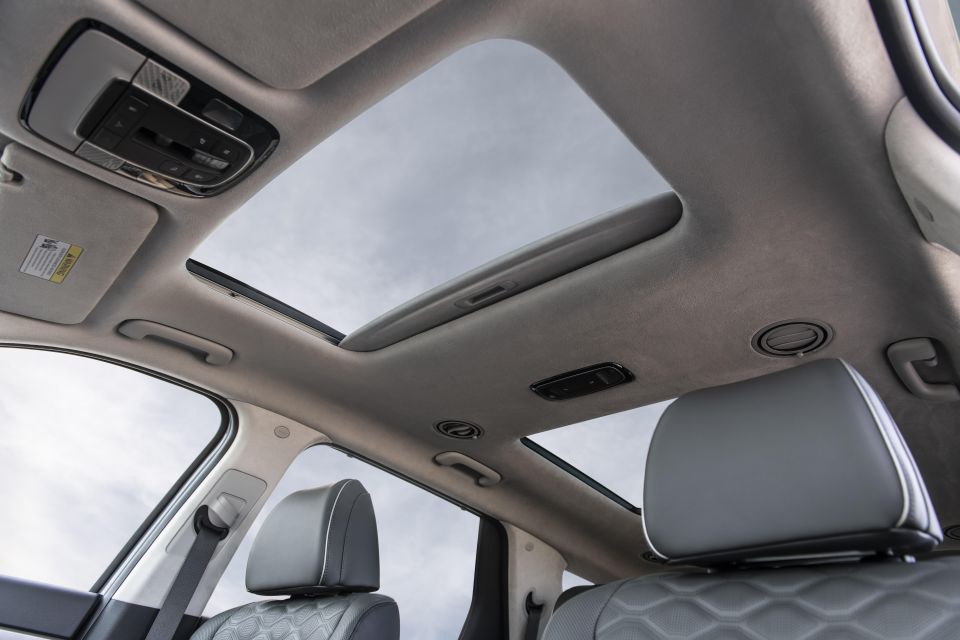
In the USA, which serves as a guide, the base model Palisade has eight seats in a 2+3+3 arrangement.
The other grades are seven seats, with two middle-row captains chairs and three seats in the rearmost row. That’s an unusual setup in our market.
The middle row seats fold flat 60:40, and slide on rails. A single button push tumbles them forwards to allow access to the third row. Anyone under 180cm will have space in the rearmost row, though the headroom is reduced by a few centimetres if you fit the sunroof.
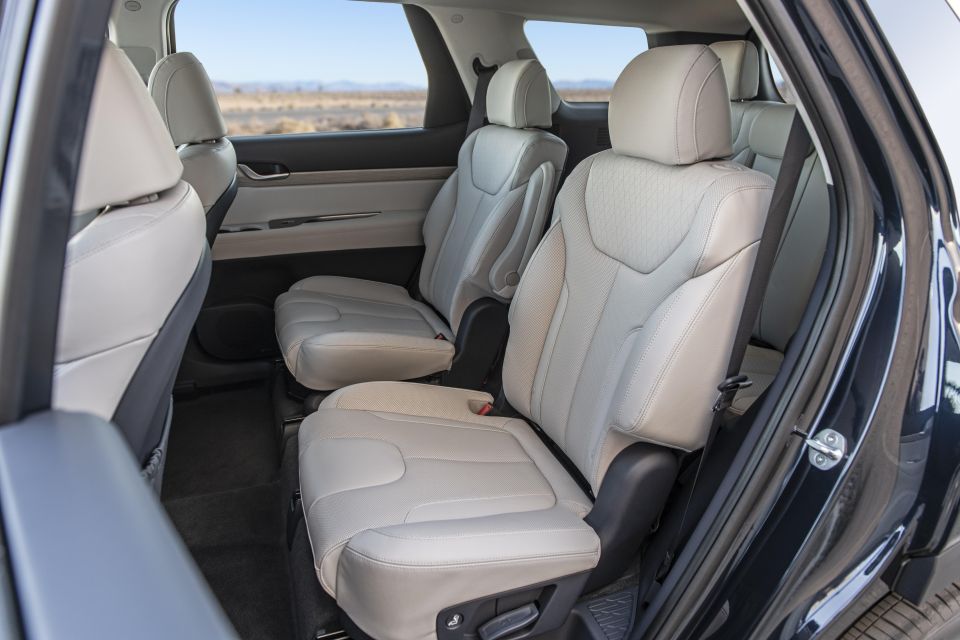
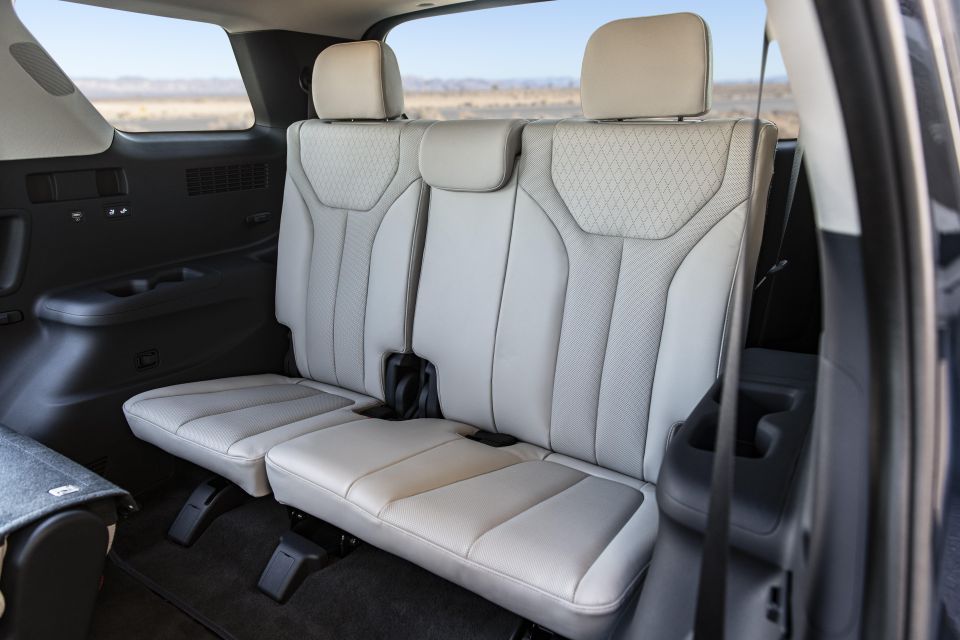
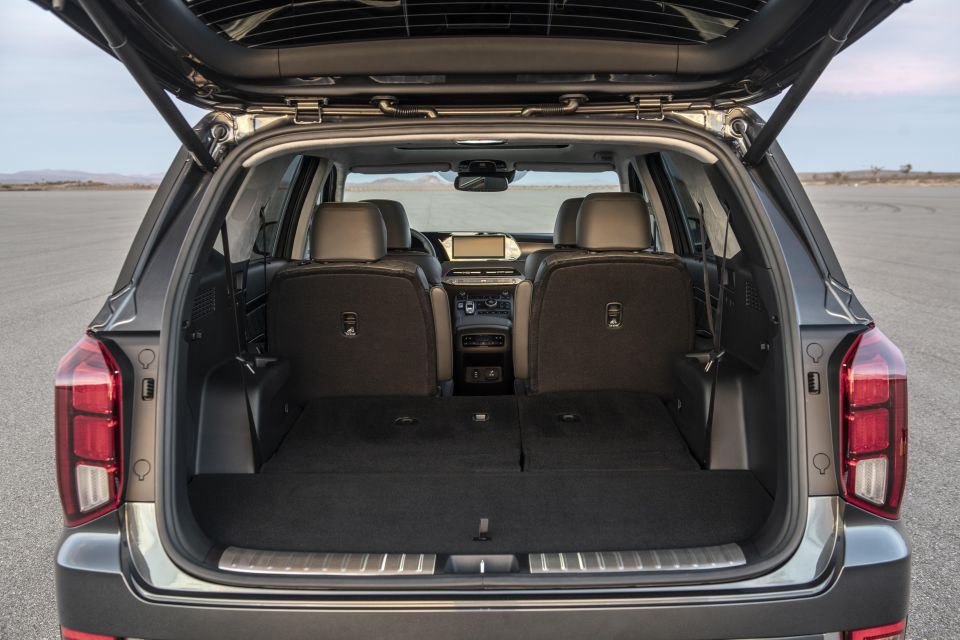

Equipment at entry level in the USA includes LED daytime running lights, air vents across all three rows, an 8.0-inch display, Apple CarPlay/Android Auto, USB ports in all three rows, and active safety features such as AEB, lane-keeping aid, active cruise control, and a driver-attention monitor.
There’s also a standard intercom that lets the driver talk to anyone in the third row more easily.
Top of the range models get a gamut of features such as LED headlights, a 12.3-inch digitised instrument cluster, head-up display, a Nappa leather trim, heated and ventilated middle-row seats, a suede roof-liner, dual-pane sunroof, cross-traffic alert and safe-exit assist, a blind-spot monitoring camera that displays in the instruments, a 10.25-inch centre touchscreen, and a 12-speaker Harmon/Kardon ‘Quantum Logic’ audio system.
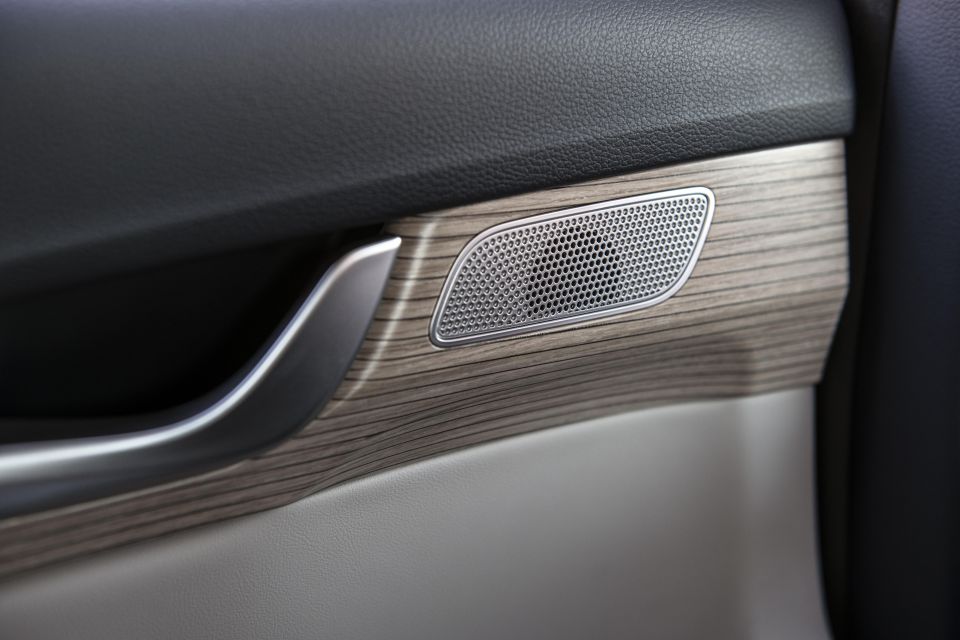

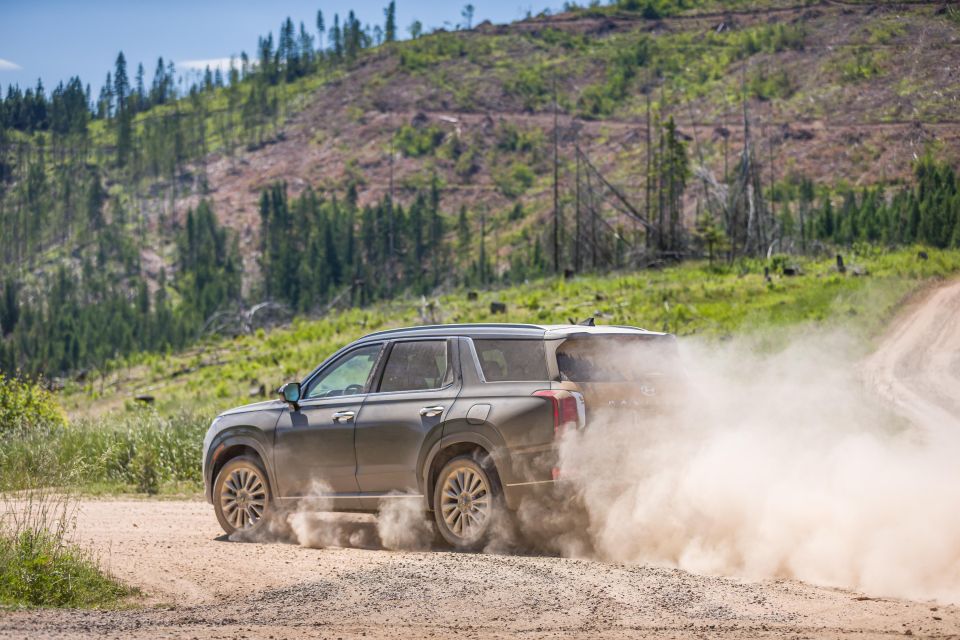
That’s a mystery at this stage. Making it right-hand just for us is sure to attract a cost, but how much of that Hyundai passes on remains to be seen.
The Santa Fe Highlander tops out at $61,660 before on-road costs, while a Mazda CX-9 Azami is $69,303 before on-roads.
We would not be surprised to see a flagship Palisade priced around the mid- to high $70,000 range, and a starting price starting with a ‘6’. But this is pure speculation.
MORE: Hyundai model onslaught: every new product due between now and 2022
Where expert car reviews meet expert car buying – CarExpert gives you trusted advice, personalised service and real savings on your next new car.


Max Davies
2 Months Ago


Matt Campbell
2 Months Ago
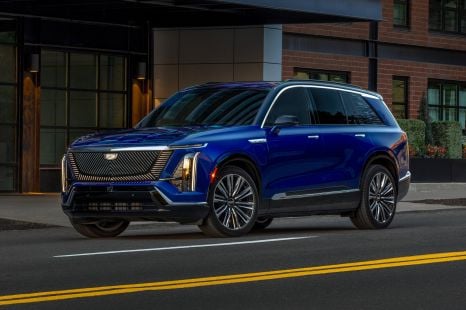

William Stopford
2 Months Ago
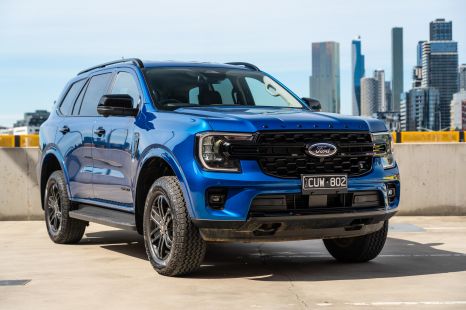

Josh Nevett
2 Months Ago


Max Davies
1 Month Ago
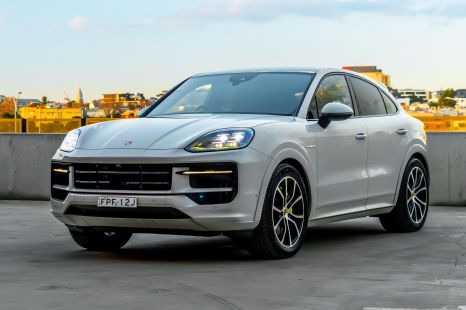

James Wong
21 Days Ago